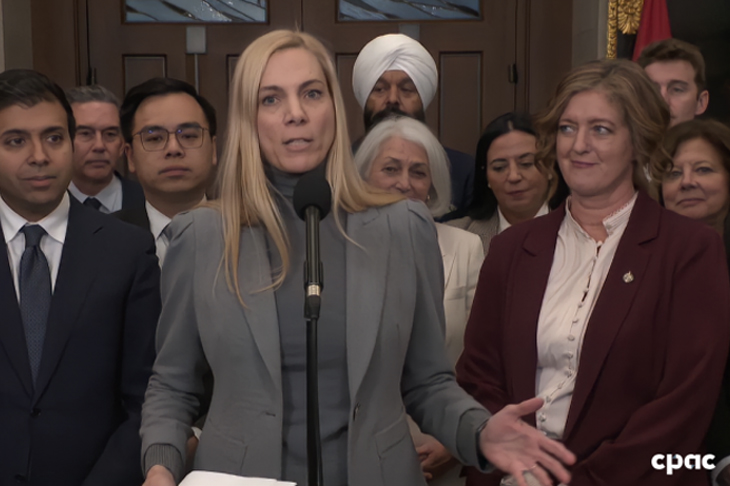Cogeco airs its HMNO model
By Greg O’Brien
GATINEAU – On Wednesday, CRTC commissioners tried to get Bell Canada CEO Mirko Bibic and other company executives to pick what they might think is a least-bad mandated mobile virtual network operator option from the choices of MVNO models others have brought to the proceeding.
Each time, Bell said no MVNO is the only option.
While some operators have said, if forced to choose, the only palatable proposed MVNO model is the one from the Competition Bureau, which would see MVNO access mandated for existing regional operators like Freedom and Videotron, and only for five years, Bell executives stuck to their plan and told the commissioners they don’t want to see an MVNO “of any form,” said chief regulatory officer Rob Malcolmson.
There are three main MVNO proposals: The Bureau one, which we covered yesterday and is generally supported by Shaw Communications; the model proposed by Cogeco, which it has called a hybrid mobile network operator model (HMNO) where only companies with an existing wired or wireless network would gain mandated wireless access; and a broader MVNO model based on the wired third party internet access regime where almost any newcomer could ask for MVNO access.
“Each of the models is an aggressive form of regulatory intervention at a time when the wireless market has never been more competitive,” said Bibic (pictured above in a cpac.ca screen cap with Bell Mobility president Claire Gillies), responding to questions from CRTC vice-chair telecom Christianne Laizner. “They’re all highly aggressive… and they all will unequivocally affect investment.”
Bell’s expert report from Charles River Associates said mandated MVNO access would reduce wireless investment among the incumbent carriers by almost $500 million dollars annually in the short run; more in the long run.
Should the CRTC force MVNO access onto incumbent networks, Bell said it will not invest to make room for someone else’s subscribers, especially at a time when traffic on its network is already high, thanks to the recent introduction of unlimited plans, which has seen a tripling of data usage among subscribers who make the switch to those unlimited plans.
“My rough estimate is that there are likely over two million Canadians now on unlimited plans… and as a result of the increase in usage, we’ve had to increase capacity in each of the four or five large networks in the country in 2019 and 2020 and I think the industry will probably spend around $700 million in those two years on incremental capacity,” said Bibic.
Bell spends around $4 billion in capital every year – and it won’t increase that to account for that additional spend on incremental capacity. “Something else will fall off,” instead, explained Bibic, who noted his shareholders rightly expect growing dividends thanks to strong free cash flow. So spending, even based on success, must be tightly managed.
“We’re tired of investing for somebody else’s subscribers… Either something else doesn’t get funded or the quality suffers. It’s one of the two.” – Mirko Bibic, Bell Canada
“Now let’s move back to regulatory and even the least aggressive of the highly aggressive forms of intervention we’re talking about here would mean that somebody else’s subscribers riding on somebody else’s network are creating an increase in capacity which has to be accommodated in one of two ways,” said Bibic. “We either increase the capital to accommodate that, in which case some other project doesn’t get funded, or we say forget it. We’re tired of investing for somebody else’s subscribers… Either something else doesn’t get funded or the quality suffers. It’s one of the two.”
Bell executives also disagreed yesterday with two notions presented by Shaw Communications, which wants the CRTC to stop win-back promotions targeting customers who have recently switched to Freedom, and for the Regulator to mandate seamless roaming handoffs so that when customers of one network roam onto another while on a call, that call doesn’t drop.
When it comes to seamless roaming, Bell says it does not provide that to Rogers or Telus, despite Shaw’s contention the Big Three have sorted this out amongst themselves, and even if it was to be done, it’s far more technically complex than Shaw’s explanation on Tuesday.
Plus, that lack of seamless roaming is one way to show Canadians just who has the bigger, better network and is a proper competitive advantage for Bell to retain. “You have to ask yourself, do we want to eliminate all the points of differentiation between networks through regulation? We don’t invest just for the sake of investing. We actually invest to differentiate our networks from others,” said Bibic. Preventing dropped calls is a driver to invest in broader, higher quality networks.
As for the win-back issue, Bell executives told the Commission it does not attempt to do that in the midst of a number being ported away from Bell. “We do not intervene and we do not call the customer,” said Bell SVP consumer marketing Martin de Gooyer.
“It’s a 20-year-old movie that harmed competition back then and would harm it again,” said Bibic. The last time Cartt.ca wrote about win-back rules was when the CRTC dropped them for the home phone market in 2007.
Cogeco also faced the Commission yesterday to pitch hard its HMNO model. The company has an extensive wired network which covers about 4,000 sq-kms in Quebec and Ontario and has wireless spectrum assets in or adjacent to many of its wired markets.
“I’m not sure mandating $13-per-gig in the interim would do any good.” – Luc Noiseux, Cogeco
Its model would see the Big Three forced to offer wireless access, but only to an existing facilities-based carrier in areas where the HMNO has existing wireline or wireless telecommunications network facilities to serve retail customers – with a condition the HMNO invest in its networks.
Cogeco would not want to see an expiry date for this sort of mandated wholesale access and preferred the Commission let it and the incumbents negotiate wholesale rates, adding the current wholesale roaming rates are not an appropriate place to start. “I’m not sure mandating $13-per-gig in the interim would do any good,” said Luc Noiseux, Cogeco’s SVP and chief technology and strategy officer, who added “I think commercially negotiated rates are the way to go.”
However, when pushed by CRTC chairman Ian Scott about what a reasonable initial wholesale rate might be under its plan, VP wireless solutions and innovation Marie Ginette Lepage identified “between $3 and $5 per gigabyte would be a good interim rate to start with.”
Tucows/Ting Mobile CEO Elliot Noss also appeared yesterday and we’ll have something on his appearance later in our coverage.
The hearing continues Thursday morning with Telus in front of the commissioners, followed by Distributel, CNOC and Voyageur Internet.









